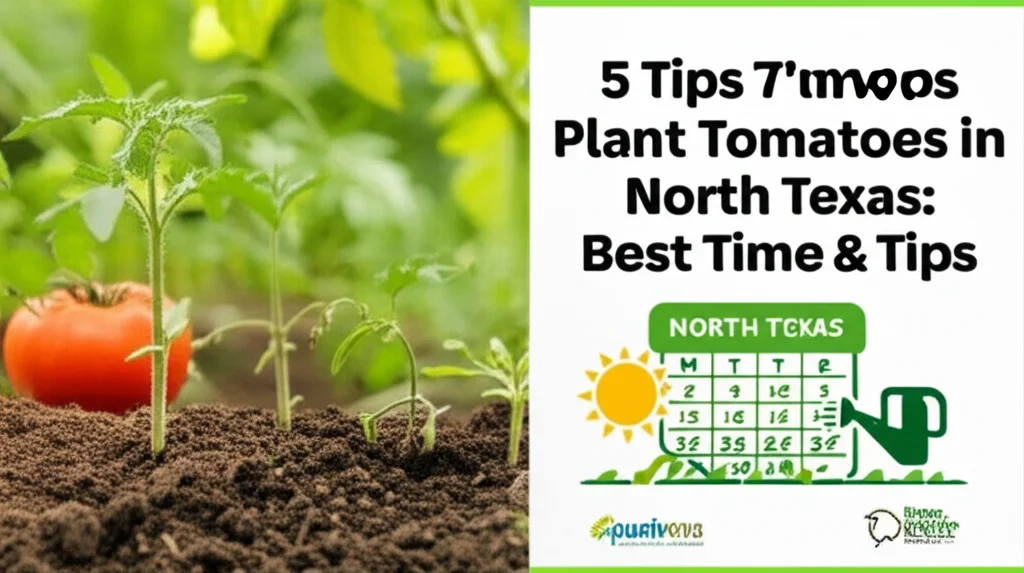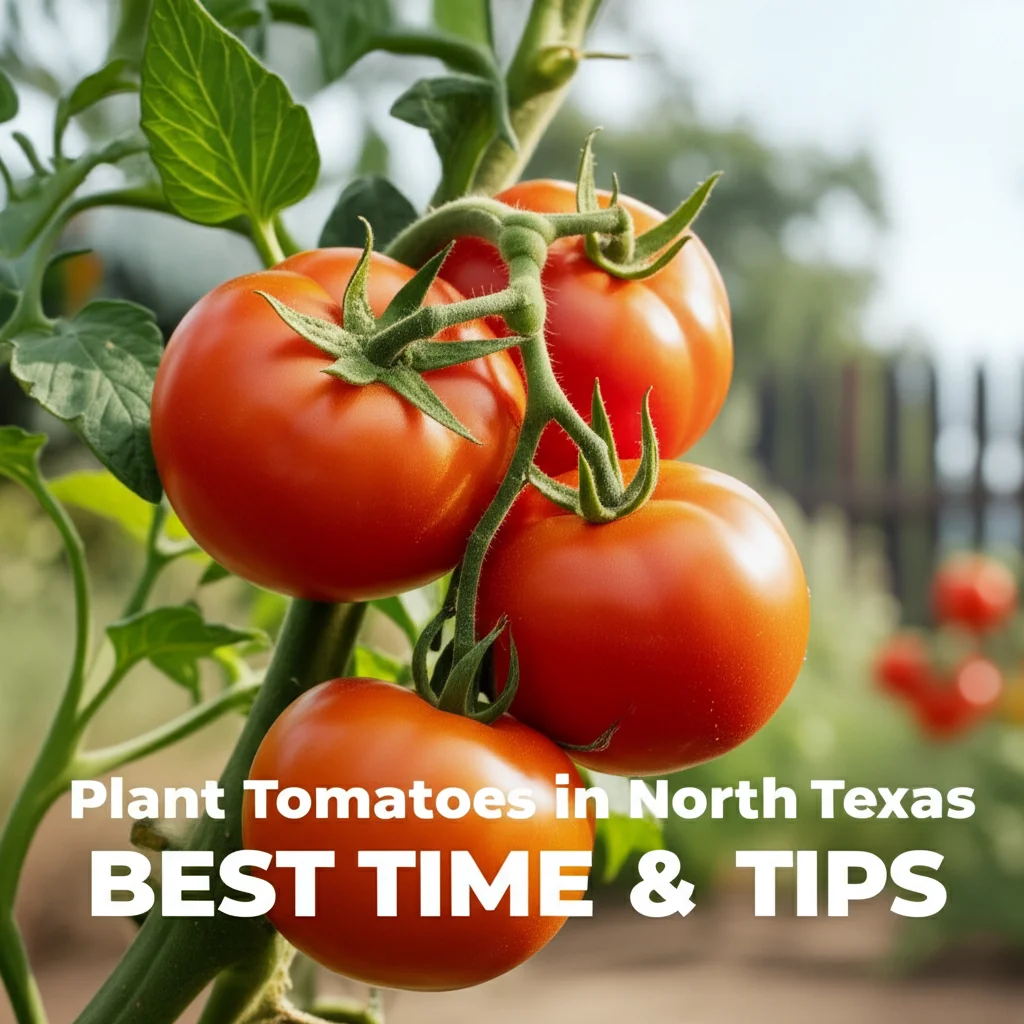
Bold Summary: Knowing when to plant tomatoes in North Texas is crucial for a successful harvest. This guide provides detailed information on ideal planting times, frost dates, variety selection, and care tips to help you grow thriving tomato plants in the North Texas climate.
Short Summary: North Texas gardeners eager for juicy, homegrown tomatoes need to understand the region’s unique climate to achieve a bountiful harvest. This guide simplifies the process, explaining the best time to plant tomatoes, considering factors like frost dates and specific variety needs.
Understanding the North Texas Climate and Its Impact on Tomato Planting
North Texas experiences hot summers and mild winters, which can be both a blessing and a curse for tomato growers. While the long growing season provides ample opportunity for fruiting, the unpredictable spring frosts and intense summer heat require careful planning. Planting too early risks frost damage, while planting too late can hinder fruit development before the scorching summer heat sets in.
Determining the Last Frost Date: A Crucial Step
The last spring frost date is the most critical factor in determining when to plant tomatoes in North Texas. This date varies across the region, typically falling between mid-March and mid-April. You can find your specific last average frost date by checking with the Texas A&M AgriLife Extension.
Ideal Tomato Planting Time in North Texas
Generally, the optimal time to plant tomatoes in North Texas is 2-4 weeks after the last average frost date. This ensures the soil has warmed sufficiently and the risk of frost has significantly diminished.
| Planting Timeframe | Approximate Dates |
|---|---|
| Early Planting (after last frost) | Mid-April to Early May |
| Main Planting Season | Early May to Late May |
| Late Planting (for fall harvest) | Late June to Mid-July |
Choosing the Right Tomato Variety for North Texas
Selecting suitable tomato varieties is another key element for success. Consider factors like heat tolerance, disease resistance, and days to maturity.
- Heat-tolerant varieties: These are crucial for surviving the North Texas summers. Look for varieties like Heatwave II, Solar Fire, and Phoenix.
- Disease-resistant varieties: Choosing disease-resistant varieties helps minimize common tomato issues. Examples include Celebrity, Better Boy, and Roma.
- Days to maturity: Consider the length of your growing season. Early-maturing varieties like Early Girl and Stupice are good options for shorter seasons or those aiming for multiple harvests.
Starting Tomatoes from Seed vs. Transplants
Gardeners have two primary options: starting tomatoes from seed indoors or purchasing transplants.
- Starting from seed: Starting tomatoes from seed allows for greater variety selection and can be more cost-effective. However, it requires more time and effort, starting seeds indoors 6-8 weeks before the last frost date.
- Using transplants: Transplants offer a convenient and quicker route to planting. Select healthy, stocky transplants with no signs of disease or pests.
Preparing Your Soil for Tomato Success
Tomatoes thrive in well-drained, nutrient-rich soil. Amend your soil with compost or other organic matter to improve its structure and fertility. A soil test can help determine any nutrient deficiencies and guide appropriate fertilization.
Planting and Caring for Your Tomatoes
- Spacing: Provide adequate spacing between plants, typically 2-3 feet apart, depending on the variety.
- Watering: Water deeply and consistently, especially during hot, dry periods.
- Support: Use stakes, cages, or trellises to support the plants and prevent fruit from touching the ground.
- Fertilizing: Feed your tomatoes regularly with a balanced fertilizer throughout the growing season.
- Pest and disease control: Monitor plants for pests and diseases and take appropriate action when necessary. Consider using organic pest control methods.
Extending the Tomato Season: Fall Planting
For a late-season harvest, you can plant another round of tomatoes in late June or mid-July. Choose fast-maturing varieties and be prepared to protect plants from early fall frosts.
FAQs: When to Plant Tomatoes in North Texas
Q: When is it too late to plant tomatoes in North Texas?
A: While late planting is possible for a fall harvest, planting after mid-July can be risky as the plants may not have enough time to mature before the first fall frost.
Q: Can I plant tomatoes directly in the ground in North Texas?
A: Yes, you can directly sow seeds into the ground after the last frost, but starting seeds indoors and transplanting seedlings generally yields better results.
Q: What are some common tomato problems in North Texas?
A: Common issues include blossom-end rot, early blight, spider mites, and tomato hornworms. Proper watering, fertilization, and pest control practices can help mitigate these problems.
Q: How do I protect my tomato plants from frost?
A: You can cover your plants with blankets, row covers, or cloches to protect them from unexpected late spring or early fall frosts.
Conclusion: Reap the Rewards of a Successful Tomato Harvest
By carefully considering the factors discussed in this guide—including frost dates, variety selection, and proper care—you can significantly increase your chances of harvesting a bountiful crop of delicious tomatoes in North Texas. Whether you’re a seasoned gardener or a beginner, understanding when to plant tomatoes in North Texas empowers you to enjoy the fruits (and vegetables) of your labor. Remember to check local resources like the Texas A&M AgriLife Extension for specific advice tailored to your microclimate. Happy gardening!

